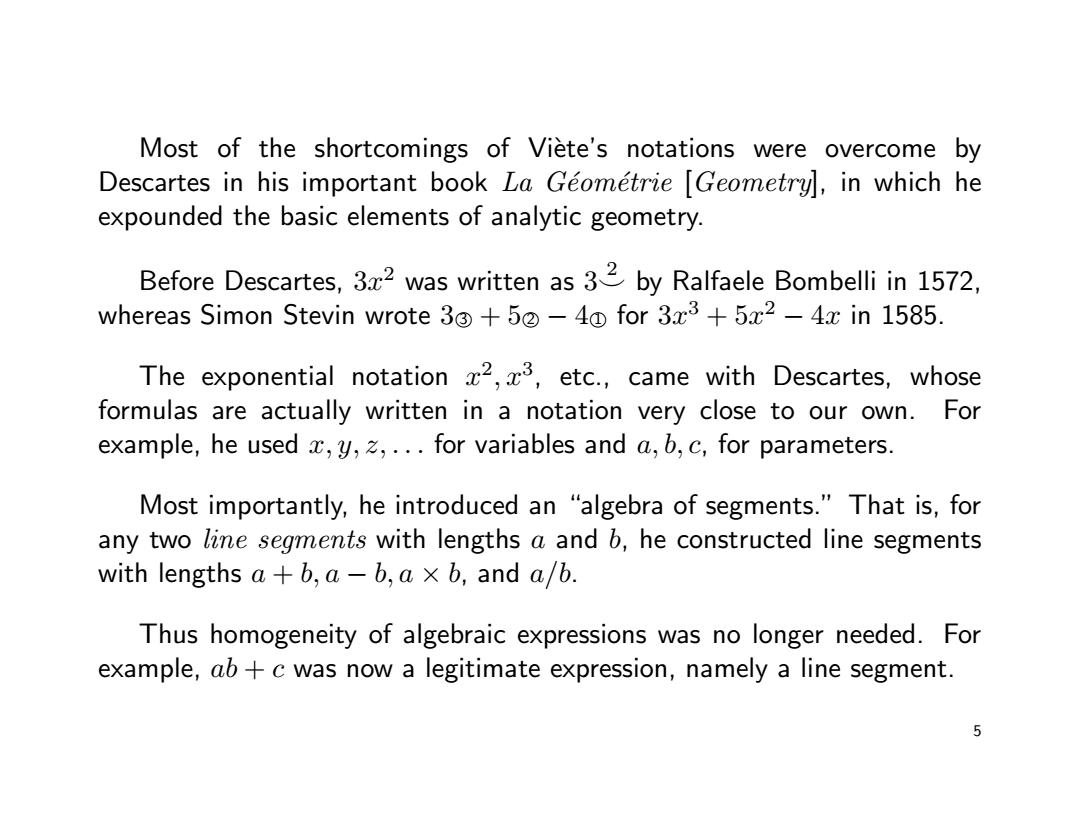正在加载图片...

Most of the shortcomings of Viete's notations were overcome by Descartes in his important book La Geometrie [Geometry,in which he expounded the basic elements of analytic geometry. Before Descartes,32 was written as 32 by Ralfaele Bombelli in 1572, whereas Simon Stevin wrote 3+50-40 for 3x3+5x2-4x in 1585. The exponential notation 22,23,etc.,came with Descartes,whose formulas are actually written in a notation very close to our own.For example,he used x,y,2,...for variables and a,b,c,for parameters. Most importantly,he introduced an "algebra of segments."That is,for any two line segments with lengths a and b,he constructed line segments with lengths a +b,a-b,a x b,and a/b. Thus homogeneity of algebraic expressions was no longer needed.For example,ab+c was now a legitimate expression,namely a line segment. 5Most of the shortcomings of Vi`ete’s notations were overcome by Descartes in his important book La G´eom´etrie [Geometry], in which he expounded the basic elements of analytic geometry. Before Descartes, 3x 2 was written as 3 2 ^ by Ralfaele Bombelli in 1572, whereas Simon Stevin wrote 3°3 + 5°2 − 4°1 for 3x 3 + 5x 2 − 4x in 1585. The exponential notation x 2 , x3 , etc., came with Descartes, whose formulas are actually written in a notation very close to our own. For example, he used x, y, z, . . . for variables and a, b, c, for parameters. Most importantly, he introduced an “algebra of segments.” That is, for any two line segments with lengths a and b, he constructed line segments with lengths a + b, a − b, a × b, and a/b. Thus homogeneity of algebraic expressions was no longer needed. For example, ab + c was now a legitimate expression, namely a line segment. 5